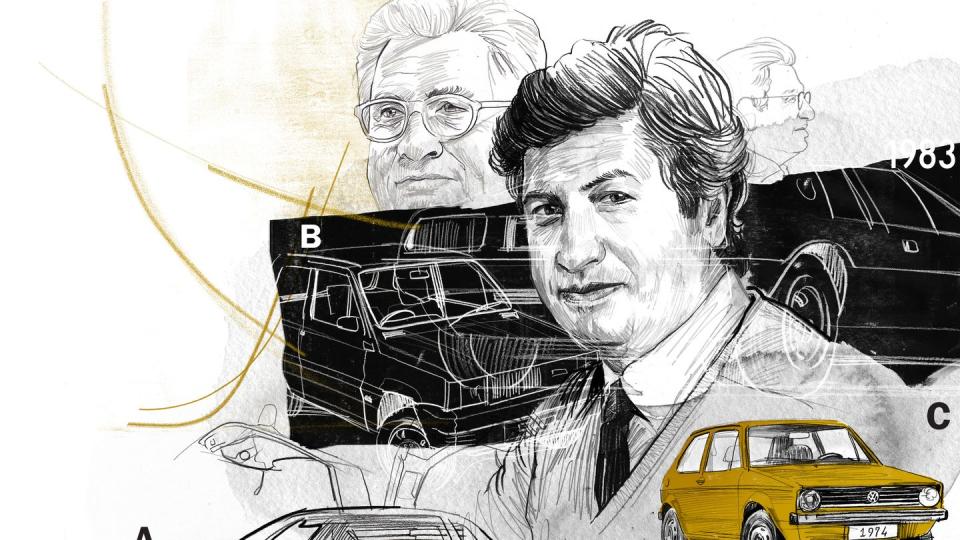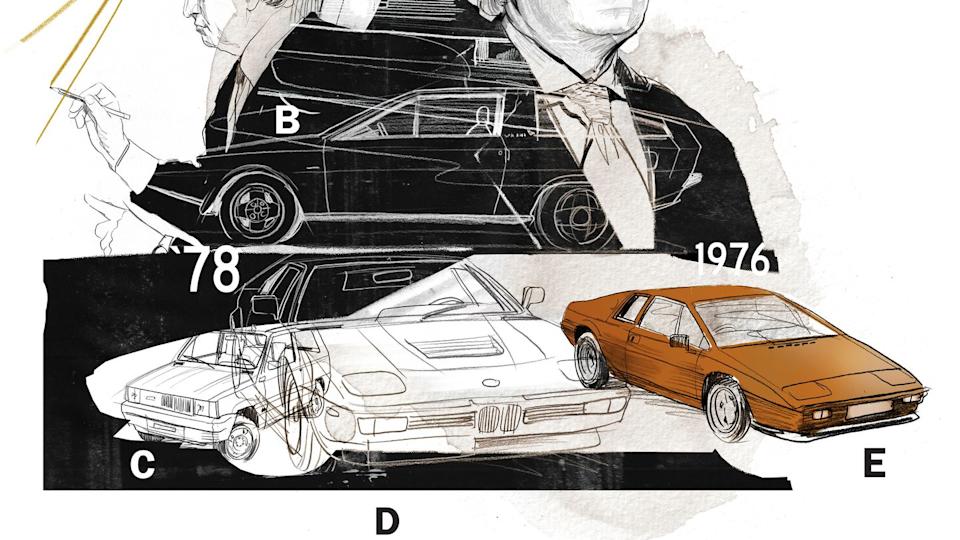The Most Influential Car Designer of the 20th Century Made More Than Supercars


Giorgetto Giugiaro is often heralded as the most influential automotive designer of the 20th century, a wunderkind revered for his intrinsic ability to create beautiful, balanced, production-ready forms. His work in the Fifties and Sixties—at Fiat and the Italian carrozzerie Bertone and Ghia—was often so startlingly elegant that the contours seemed predestined. Think of his prototypical sports coupe, the 1963 Alfa Romeo Giulia Sprint GT; the 1966 Maserati Ghibli, a minatory exemplar of the front-engine–rear-drive GT; or the 1967 De Tomaso Mangusta, a belligerent mid-engine supercar featuring avant-garde Italian tailoring and cudgeling American V-8 potency.
This story originally appeared in Volume 18 of Road & Track.
But when Giugiaro started his own firm, Italdesign, in 1968, the sumptuous swoopiness of his early work seemed to exit his system, and he began to focus on language that was, quite literally, edgier. The hallmarks of this period, known as his folded-paper era, include sharp body creases, hard corners, and boxy envelopes. These new designs combined his greatest qualities: purposefulness, adaptivity, and alluring au courant style.
Design historians have attributed his shift to varied contextual influences: The 1968 global student uprisings that celebrated overthrowing convention. The diminished expense of joining straight-lined panels, which was relevant for an industry consolidating and reeling amid the oil crises of the Seventies. The rise of brutalist architecture, which revered planarity and imposition, rendered in industrial materials. And our moves into space, where angularity conjured a future of fresh possibility or scarcity.

Giugiaro had a simpler explanation. In 2019, he told Esquire, “After leaving Bertone and Ghia, I needed a distinctive style of my own, so people didn’t think I was using my employers’.”
The real foundation of these efforts was the 1974 Volkswagen Golf. Seeking a replacement for the superannuated Beetle, Volkswagen brass toured the Turin Auto Show and discovered that most of their favorite designs were Giugiaro’s. His angular, water-cooled, front-engine–front-drive concept opposed the Bug pervasively. But its flaring arches, upright C-pillar, slim horizontal grille and beltline, and large greenhouse set the genetic code for generations of two-volume econoboxes. His concurrent Scirocco, looking like a Golf compressed in a taut lunge, did the same for economical sports coupes.
Also in 1974, Giugiaro created the boldly faceted Pony Coupe concept, which helped introduce Hyundai to the wider world. The Pony has so beguiled the company’s current designers that they’ve created a modern version of it, the N Vision 74 concept. The striking Ioniq 5 EV hatchback is another unabashed tribute to this era of Giugiaro’s work.
From there, Giugiaro took the concept upmarket. Drawing inspiration from his ax-head-shaped 1971 Maserati Boomerang concept, his 1976 Lotus Esprit ruptured the British brand’s curvaceous past. A low, wedgy doorstop, the Esprit looked at once planted and weightless, like a specter poised to steal your soul.

The 1978 BMW M1, a roadgoing homologation special, was the brand’s first M machine and first mid-engine car. Inspired by Paul Bracq’s 1972 Turbo concept, it was and remains a singular outcast in the Bavarian’s heritage, with its only nods to brand convention being its twin kidney grilles and the kink in its C-pillar. It was the ramp to a cliff jump that was initiated but suspended, eternally incomplete.
Giugiaro’s third-generation 1979 Maserati Quattroporte barely softened his scimitar-like Medici concept. Its Jersey-barrier silhouette and lavish interior reflected the cosseted bunkering desired by wealthy Europeans in an era of political upheaval, bombings, and kidnappings. Giugiaro’s 1978 Audi 80 used a similar scheme for petit bourgeois tastes.
His 1981 DeLorean DMC-12 for former General Motors executive John DeLorean’s eponymous failure sported derivative gullwing doors, and its stainless-steel body was a cheap-out to avoid paint. But its blunt, glassy shape was futuristic enough to serve as a time machine in the Back to the Future trilogy.
Despite these upmarket commissions, Giugiaro never forsook quality design for the sake of the masses. His Lancia Delta of 1979 honed the Golf’s planarity into the trapezoidal. His 1980 Fiat Panda was little more than two steel boxes. Its workaday simplicity, flexible interior space and materiality, and available four-wheel drive made it like a shrunken, attainable Land Rover and progenitor of all cute utes. His Isuzu Impulse of 1981 featured a rectangular prow and an ovoid rear, like an escape pod cobbled from galactic junk during a hyperspace freefall. Its exact inverse form defined the 1991 Subaru SVX.
Every family tree has its rotten fruit. Shoddy build and wheezy engines crippled Giugiaro’s uncluttered Yugo GV, but it still fulfilled the mission of affordable transportation as cars like the Golf moved upscale. You can’t fault a maestro for sharing his gifts as broadly as possible.

You Might Also Like

 Yahoo Autos
Yahoo Autos 